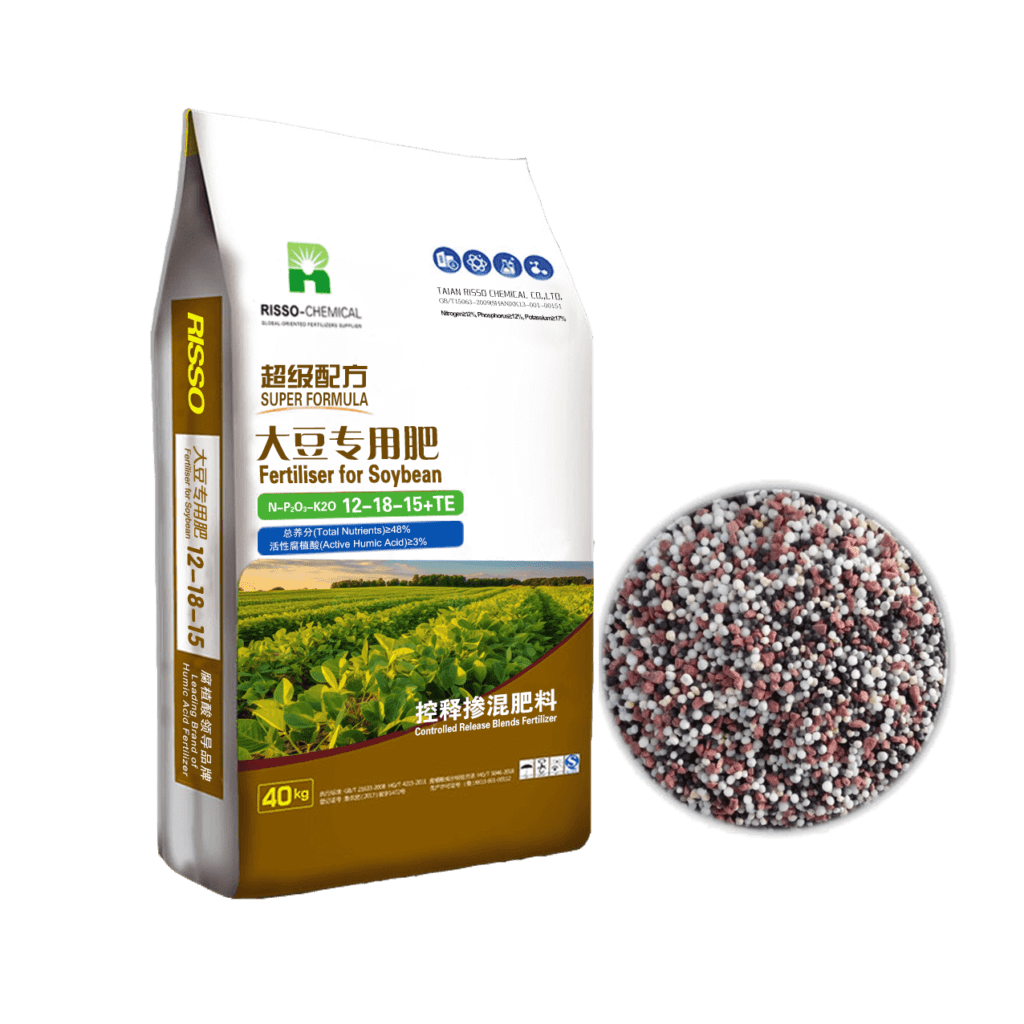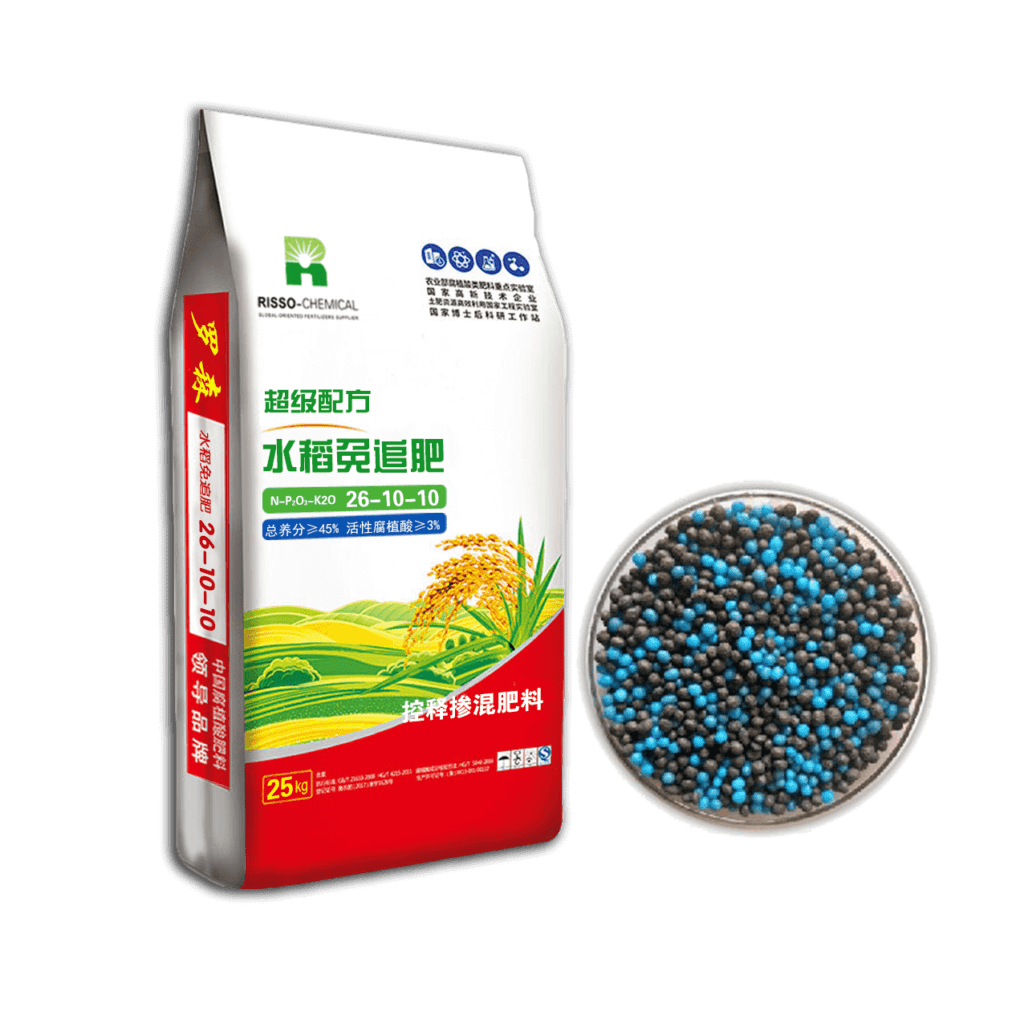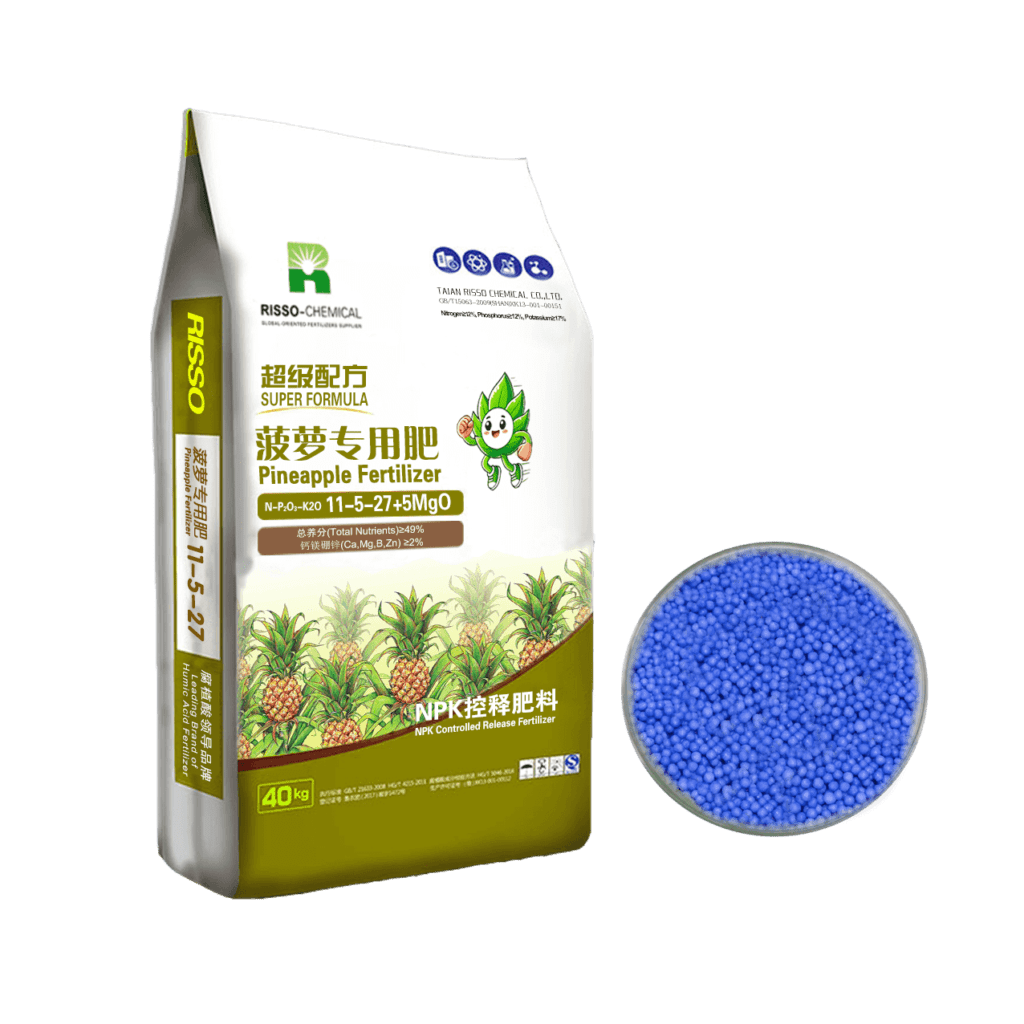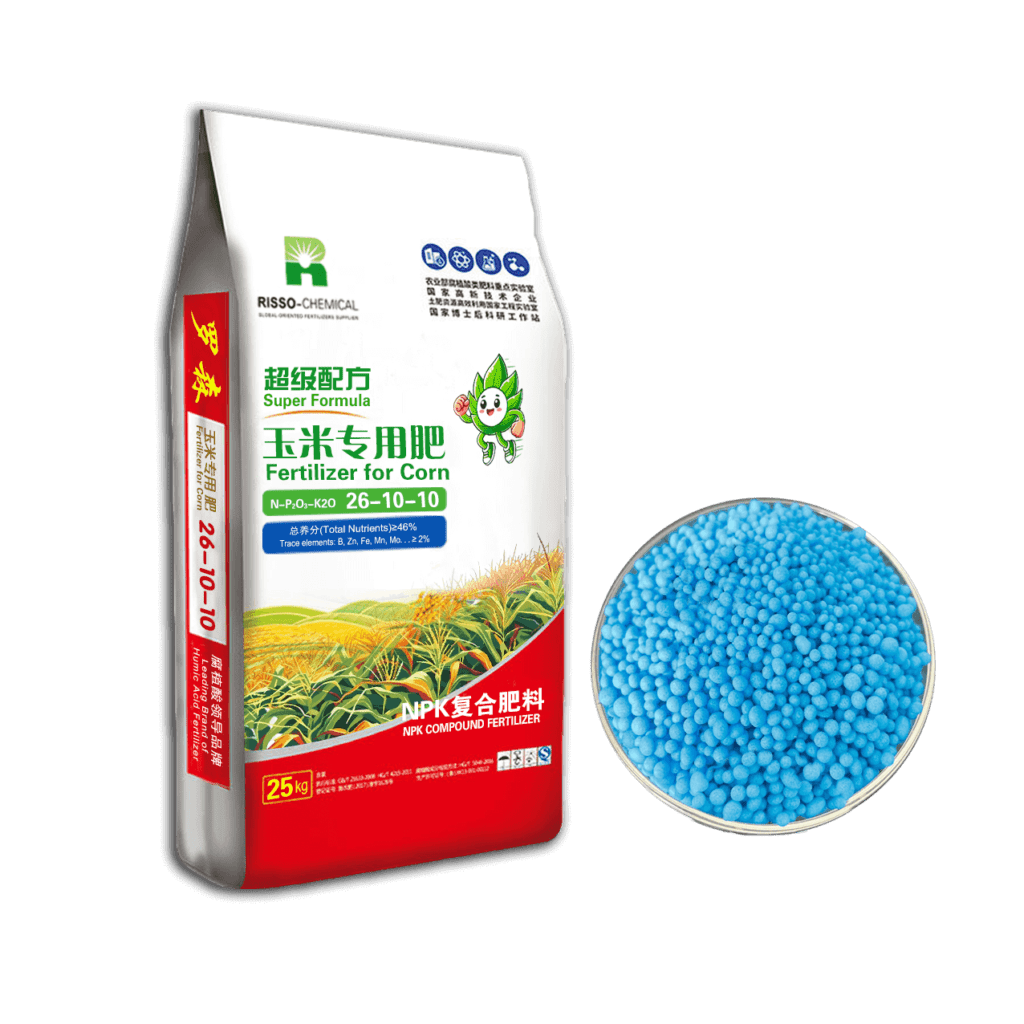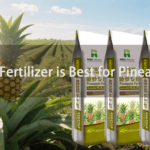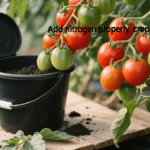Let more growers get greater benefits
What Fertilizer is Best for Pineapple? A Guide to Boosting Yields
- Industry News
- August 25, 2025
- 11:24 am
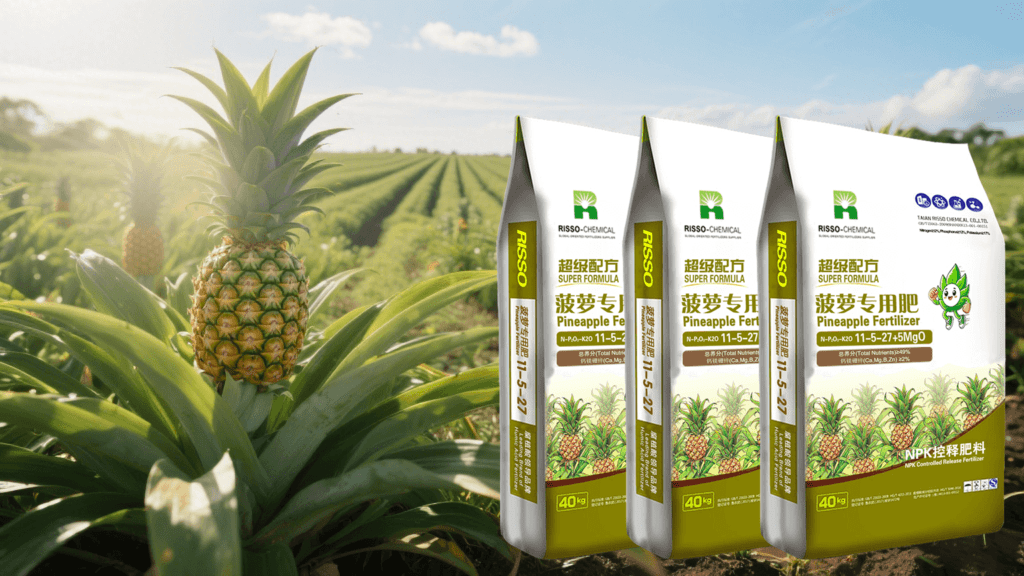
Pineapples are a demanding crop that requires a balanced fertilization program for optimal growth and high yields. The key to successful pineapple cultivation is choosing the best fertilizer that will meet its nutritional needs throughout the growing season. In this guide, we’ll explore the most effective pineapple fertilizers and highlight Risso’s pineapple fertilizers that can improve the performance of your pineapple crop.
Table of Contents
Nutrient Requirements of Pineapples
- Potassium-loving crops: Potassium (K) is the most demanded nutrient for pineapples and is crucial for fruit size, sugar content, flavor, and storage and transportation tolerance.
- It requires more nitrogen: Nitrogen (N) promotes leaf growth, expands the area for photosynthesis, and lays the foundation for fruit development.
- Magnesium sensitivity: Magnesium (Mg) is a core component of chlorophyll. A deficiency of magnesium can severely inhibit photosynthesis,causing leaves to turn yellow (lose their green color).
- Prefers acidic soil: The suitable soil pH value is 4.5 to 5.5. At this acidity level, the availability of trace elements such as iron, manganese and zinc in the soil is high.
- Chlorine-sensitive crops: They are relatively sensitive to chloride ions (Cl-). Excessive amounts can cause an increase in the moisture content of the fruit flesh, a decrease in flavor, and poor storage resistance. Therefore, the use of chlorinated fertilizers (such as potassium chloride) should be avoided as much as possible
Fertilization principles
- Heavy application of base fertilizer: The base fertilizer mainly consists of organic-inorganic compound fertilizer, combined with long-lasting slow release chemical fertilizer(PCU), which accounts for a large proportion of the total fertilizer application.
- The combination of rhizosphere fertilization and foliar top dressing: soil fertilization is the main approach, and during critical periods (such as before and after flowering induction and during fruit expansion), rapid supplementation of trace elements and medium elements is carried out= through foliar spraying.
- Balanced fertilization: Pay attention to the ratio of nitrogen, phosphorus and potassium, and at the same time supplement medium and trace elements such as calcium, magnesium, boron and zinc.
Detailedfertilizationplan(taking3,000to4,000kilogramspermuasanexample)
- Base fertilizer (before planting)
This is the most crucial step, laying a solid foundation for the entire growth period of the pineapple. Organic-inorganic compound fertilizer: Apply 600-700 kilograms of NPK10-5-10+2MgO+20OE fertilizer per hectare
Method: After raising the beds, dig planting furrows 10-15cm deep, thoroughly mix all base fertilizers with the soil, cover them with soil, and thenplant the seedlings.
- Top dressing (according to growth stage)
a. Seedling promoting fertilizer (Nutrient growth period: after transplanting to before flower induction)
- Time: Start 2 to 3 months after planting, once every 1 to 2 months, for a total of 2 to 3 times.
- Objective: To promote rapid leaf growth and form a powerful vegetative body.
- Fertilizers: Mainly high-nitrogen type fertilizers. Each time, NPK42-0-5 225 kilograms can be used per hectare
- Method: After rain or irrigation, apply or spray in the holes beside the plants
b. Flower-inducing fertilizer (Pre-reproductive growth stage: One month before flower induction)
- Time: About one month before the planned flower induction (treated with calcium carbide or ethephon).
- Objective: To store sufficient nutrients for flower bud differentiation and bud formation, ensuring that the flower buds are strong and healthy.
- Fertilizer: Switch to balanced or high-phosphorus and high-potassium type fertilizers. Apply 300 to 350 kilograms of balanced compound fertilizer (NPK15-15-15) per hectare.
- Foliar fertilizer: 0.2% MKP+1B solution can be sprayed to promote flower bud differentiation.
c. Strong Fruit Fertilizer (Fruit development period: After flower fall to before fruit ripening)
- Time: After the flowers fall, the fruit enters a period of rapid expansion.
- Objective: This is the most critical period for fertilizer demand, which directly determines the yield and quality. Focus on supplementing potassium and calcium.
- Fertilizer: Mainly high-potassium type fertilizers. Apply 350-400 kilograms of high-potassium compound fertilizer NPK10-0-30+TE per hectare.
- Foliar fertilizer: During this period, the demand for calcium is high. Sugar alcohol calcium can be sprayed every 10 to 15 days for 2 to 3 consecutive times. This can significantly enhance the firmness and sweetness of the fruit and prevent cracking.
d. Sprout Strengthening Fertilizer (After fruit harvest)
- Time: It should be carried out promptly after the fruits are harvested.
- Objective: To promote the growth of suckers and descendants, and cultivate strong seedlings for the next generation of fruiting mother plants.
- Fertilizer: Mainly use high-nitrogen fertilizers to restore the vigor of the tree. Apply 250-300 kg of NPK42-0-5 per hectare
Key Fertilization Tips (Avoiding Misuse and Improving Fertilizer Efficiency)
- Avoid applying raw or concentrated fertilizers: Uncomposted organic fertilizers (such as fresh chicken manure and peanut bran) will ferment and release heat in the soil, causing pineapple root rot. Excessive single-use chemical fertilizer applications (such as over 50 kg of urea per mu) can cause soil salinization and leaf tip burn.
- Suitability for acidic soils: Pineapples prefer acidic soils, so avoid using alkaline fertilizers (such as ammonium bicarbonate and wood ash). If the soil pH is >6.0, apply sulfur powder (50-100 kg per mu) or humic acid fertilizer to adjust the soil pH.
- Critical period for foliar fertilizer application: The leaves are the “second root system” of pineapples.During the flower bud differentiation and fruit expansion stages, spraying foliar fertilizers with phosphorus, potassium, calcium, and magnesium fertilizers has an absorption efficiency over 30% higher than soil fertilization and can quickly alleviate nutrient deficiency symptoms (such as fruit cracking due to calcium deficiency and leaf yellowing due to magnesium deficiency).
- Adjustment of fertilizer application during rainy season: The rainy season can easily lead to nutrient loss, so the amount of fertilizer applied at a time should be reduced and the frequency of fertilization should be increased (e.g., once a month, change to once every 15 days), and choose granular slow-release fertilizer (such as controlled-release compound fertilizer) to prevent quick-acting fertilizer from being washed away by rain.
Conclusion
Pineapple-specific fertilizer is a highly effective solution tailored to the pineapple’s characteristics of shallow roots in tropical climates, acid-loving and alkaline-averse conditions, and widely varying fertilizer requirements throughout its growth period. It precisely meets the needs of each growing season with customized ratios. It contains chelated micronutrients to prevent nutrient deficiencies, adapts to acidic soils to protect the root system, and offers long-lasting, fast-acting fertilizers that save labor and costs, completely resolving the pain points of general-purpose fertilizers, such as nutrient mismatches and frequent fertilizer damage. Promoting the use of pineapple-specific fertilizers will not only help growers simplify management and reduce costs, but also significantly improve pineapple fruit quality and yield, providing strong support for the high-quality and efficient development of the pineapple industry. It is an ideal fertilizer for pineapple cultivation.
Corn Fertilizers Related Products
If you want to know other questions about Specialized Fertilizers please contact us and we will provide professional answers.
- Article
What will you get when touch?
✔ Quick & helpful reply within 6 hours.
✔ Tailored solutions for your project.
✔ One-stop product, tech, market
TRENDING
Want to find a China fertilizer manufacturer?
Risso will be your best choice; send us your request for your fertilizer details requirement.
TAIAN RISSO CHEMICAL FERTILIZER CO.,LTD
- Address: High-tech Development Zone, Taian City, Shandong Province
© Copyright 2017 RISSO CHEMICAL. All Rights Reserved.



